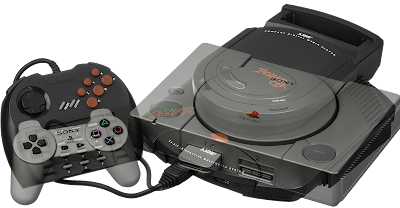Founded in 1998, Blade Interactive was an English development studio formed from the collapse of Mirage Technologies (Multimedia), the studio best known for the legendarily infamous Rise of the Robots, and at first Blade made its name developing billiards & snooker games, most notably the World Championship Snooker series. Aside from the occasional racing game, namely Room Zoom & G-Surfers/HSX: Hypersonic.Xtreme, billiards/snooker was really all that Blade Interactive worked on, but one of its staff (Huw Lloyd) was also working on something interesting: The Hydro Engine. As the name says, the Hydro Engine was all about allowing water to be treated like a realistic & dynamic fluid in a video game environment, including being able to both fill enclosed spaces & drain out of openings in said spaces. Understandably, this sounded like an awesome bit of tech to work with, so it was decided to create a game that could take full advantage of the Hydro Engine, but at the same time Blade Interactive technically didn't want its name associated with this. Instead, this game was developed by a studio called Dark Energy Digital, and while it was never outright stated it looks as though Blade simply outright changed its name to Dark Energy, as according to the Wayback Machine Blade's website more or less stopped existing after 2008, while Dark Energy's website started up in 2009; also, Dark Energy did make at least one snooker game, continuing Blade's legacy.
First revealed at the start of 2007, Hydrophobia would eventually be announced for release in March 2009 as a traditional retail release, but wound up getting hit with various delays before getting changed to a timed exclusive for Xbox 360 that Microsoft Studios even published itself via Xbox Live Arcade on September 29, 2010. Though what was released was actually just the first part of a three-episode series (which was a common way of releasing digital games, at the time), initial critical reception towards Hydrophobia was only mixed at best, and while creative director/designer Pete Jones, who was also part of Dark Energy's PR team & even credited as creating the original story of the game's narrative, admitted that it was difficult to accept the negative reception, he said that everyone at Dark Energy would do everything they could to improve the game; again, this guy was a producer for Rise of the Robots, so he certainly had experience with this kind of reaction. To Dark Energy's credit, three months later the game received an update on December 21, 2010 dubbed Hydrophobia Pure (though it's never stated as such in-game) which featured all manner of fixes & changes, including ones to the controls, physics, mechanics, camera & map systems, & it even removed superfluous dialogue in some cutscenes. Not content with just that, Dark Energy would then release a third version of the game, titled Hydrophobia Prophecy, for PlayStation 3 & Windows (via Steam), which the studio considered a "Version 1.5" that included a bunch of brand new additions & changes that weren't in Pure; the Windows version first saw release on May 9, 2011, while the PS3 version wouldn't come out until November 1, 2011. Unfortunately, all of this hard work wouldn't pay off, as Dark Energy Digital would close its doors on March 19, 2012. While sales numbers were never revealed for any version of Hydrophobia, leaderboards revealed only 24,532 people ever completed the game on 360 by January 2011, just four months after the initial release & roughly one month after the Pure update. Checking the leaderboards nowadays show just over 205,000 people overall on Xbox & just over 100,000 on PS3, but that's after another decade+ of sales; still, those aren't exactly the numbers Dark Energy was hoping for, I imagine.
However, & most interestingly enough, Hydrophobia has managed to not disappear into the ether & become delisted, as the 360 version is not only still available for sale (for $9.99, though it's gone on sale once in a while) but was even added to the backwards compatibility list for Xbox One (& later Xbox Series) on February 26, 2019, meaning that you can play it with improved performance & the like when compared to playing it on the 360. Meanwhile, the Windows version of Prophecy is also still available for sale over on Steam (for just $4.99), though the PS3 version has since been delisted from the PS Store, though I did purchase it long ago. In fact, the leaderboards show that four other people besides me have played the game on PS3 over the past week of me playing this for review... & I only got second place for the entire campaign; curse you, PolarPhantom! The rights to Hydrophobia are now with Cherry Pop Games, a Manchester-based studio (just like Blade & Dark Energy) that has some of the same staff, like Pete Jones; Cherry Pop even makes billiards & snooker games! So let's go over Hydrophobia (Pure) & Hydrophobia Prophecy, see how they differ (& which one is arguably better), & decide if this game is more deservedly unfinished tech demo or if it's actually better than expected.


















